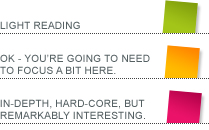A lot of Social Media experts are very excited about the new Facebook to Twitter functionality, and they’re right. It’s a great tool that has a lot of potential, and can definitely streamline your social media communications. It’s especially a great tool if you don’t have a lot to say at one time, but do want to keep your brand visible. For small businesses, who haven’t the time or the resources to manage a fully integrated social media campaign, it’s a brilliant way to kill two birds with one stone. Unfortunately, though, it’s not necessarily a good way to run a social media campaign that makes real use of the different platforms to reach a variety of customers in meaningful ways.
Don’t want to get left behind?
There’s so much hype about social media marketing these days, and each platform requires effort to understand and properly use it. With ‘everyone’ out there tweeting and Digging and +1ing, it’s overwhelming, and you may feel you just have to get into the throng and go for it, or get left behind. Yes, and no. You should give attention to social media. It’s definitely making a difference in the way brands communicate with their customers, and if you don’t get into it at some point you may find you’ve lost out on a potentially huge marketing opportunity that comes at (generally) a smaller cost than other media. But without a carefully thought-out social media plan, you’re throwing clods into a big field of dirt. Who cares if you’re tweeting 70 times a day if your tweets all lead to the same blog post? Nobody is interested in what you had for lunch, and your Facebook fans do not want to see photos of your new office chair (unless, of course, it is a truly amazing chair).
Different platforms, different content
Here’s the thing: although a lot of the major social media sites are starting to look a lot alike, and offer similar functionality, they are not all managed the same way. Specifically, Facebook and Twitter are two very different platforms, offering access to different audiences who expect different things from you. Facebook allows you to add attractive links, with thumbnails and metadata, that give your audience more detail about what they might be about to read. It also allows you to use status updates and wall posts to talk a little bit about something that’s important to you, or to your customers. You shouldn’t make those too long, but you should definitely not try to squeeze them into the 120 characters considered optimum for Twitter. Yes, there are occasional quick updates that can be packaged into a tweet-sized message, and that’s where social media dashboards like Hootsuite can come in useful. But if I have to package every single thing I put out on Facebook so that it’s readable for my Twitter followers, I’m doing my Facebook fans a disservice*. And I’m definitely irritating those who follow me on both platforms, because there’s no point in doing so if they don’t get different (even slightly different) content on each.
So, while we do like it when Facebook plays nicely with others, we’d advise against pushing your Facebook updates through to your Twitter account. If you can’t keep up with both platforms, choose the one best suited to your resource availability and manage that one well. Your customers will thank you for it.
*Note that Facebook has cleverly allowed you to choose the specific types of updates you want to share on Twitter. Cleverly managed, this is a winning idea. But again, if you’re choosing the Facebook to Twitter link because you haven’t the time to properly manage your social media, you’re probably not going to get this right.


